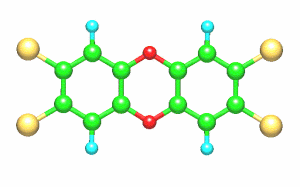Welcome to BAOLAN EP INC.
24-Hour Hotline
- Carbon Capture Utilization
- VOCs series
- DeSOx-DeNOx-Dedust
- Consumables

Contact Baolan

Address: Jurong East Road, Huantai Industrial Park, Zibo City, Shandong Province
Tel: +86-135-8959-1050
E-mail: [email protected]
Tel: +86-135-8959-1050
E-mail: [email protected]
Industry Knowledge
What are dioxins and how to deal with them
时间: 2025-07-15 11:16
Dioxins are a group of persistent organic pollutants (POPs) with similar chemical structures and biological toxicity. They belong to chlorinated oxygen-containing tricyclic aromatic hydrocarbons, are highly toxic, difficult to degrade, can p
Today, Baolan editor will talk to you about dioxin.
Dioxins are a group of persistent organic pollutants (POPs) with similar chemical structures and biological toxicity. They belong to chlorinated oxygen-containing tricyclic aromatic hydrocarbons, are highly toxic, difficult to degrade, can persist in the environment for a long time, and accumulate through the food chain.
Dioxins are a group of persistent organic pollutants (POPs) with similar chemical structures and biological toxicity. They belong to chlorinated oxygen-containing tricyclic aromatic hydrocarbons, are highly toxic, difficult to degrade, can persist in the environment for a long time, and accumulate through the food chain.
Main characteristics:
1. Chemical structure:
i Includes 75 polychlorinated dibenzo-p-dioxins (PCDDs) and 135 polychlorinated dibenzofurans (PCDFs). ? Among them, 2,3,7,8-tetrachlorodibenzo-p-dioxin (TCDD) is the most toxic substance and is classified as a Group Ⅰ carcinogen by the International Agency for Research on Cancer (IARC).
2. Sources:
i Natural formation: volcanic activity, forest fires, etc. (accounting for a small proportion).
ii Human activities:
■ Waste incineration (especially incomplete combustion of chlorine-containing plastics).
■ Chemical production (such as pesticide and herbicide manufacturing).
■ Metal smelting and bleaching processes in the paper industry.
■ Smoking, automobile exhaust, etc.
3. Toxicity hazards:
i Carcinogenicity: long-term exposure may cause cancers (such as liver cancer, lung cancer).
ii Reproductive and developmental toxicity: affects fetal development, causing malformations and immune system damage.
iii Endocrine disruption: interferes with thyroid hormones, sex hormones, etc.
iv Others: skin lesions (such as chloracne), liver damage, metabolic disorders.
4. Environmental and health risks:
i Persistence: can exist in soil for decades and spread long distances through the atmosphere.
ii Bioaccumulation: easily accumulates in fat tissues and enters the human body through meat, dairy products, fish, etc.
5.Prevention and control:
• Reduce exposure: Avoid burning garbage and properly manage industrial waste.
• Dietary considerations: Diversify diet and reduce intake of animal fats (dioxins tend to accumulate in fats).
• International convention: The Stockholm Convention lists dioxins as priority pollutants for control.

Dioxins are a group of highly toxic persistent organic pollutants that are difficult to degrade naturally but can be removed or degraded through physical, chemical, or biological methods. The following are common methods for removing or degrading dioxins:
1. High-temperature incineration
Principle: Under high temperature (≥850°C) and sufficient oxygen conditions, dioxins can be completely decomposed.
Applicable scenarios: Treatment of industrial waste, medical waste, and contaminated soil.
Key points:
Ensure complete combustion; otherwise, new dioxins may be formed.
Equip with flue gas treatment systems (such as activated carbon adsorption, bag filters) to remove residual pollutants.
2. Chemical reduction methods (such as alkali metal reduction)
Principle: At high temperatures (200-400°C), hydrogen donors (such as hydrogen gas, sodium/potassium compounds) replace chlorine atoms in dioxin molecules to produce less toxic products.
Technical representatives:
Base Catalyzed Decomposition (BCD): Uses sodium/potassium hydroxide and catalysts.
Gas Phase Chemical Reduction (GPCR): Reaction in a hydrogen atmosphere.
3. Photocatalytic oxidation
Principle: Using ultraviolet (UV) light irradiation combined with catalysts (such as titanium dioxide) to decompose dioxins into CO?, water, and inorganic salts.
Applicable scenarios: Treatment of water bodies or surface contamination.
Advantages: Operates at room temperature and pressure, with no secondary pollution.
4. Biodegradation
Principle: Certain microorganisms (such as white rot fungi, Sphingomonas) can slowly degrade dioxins.
Applicable scenarios: Soil or sediment remediation.
Limitations: Low efficiency, long duration (requires months to years), suitable for low concentration pollution.
5. Physical Adsorption Method
Materials: Adsorbents such as activated carbon, zeolite, clay, etc.
Applicable scenarios:
Waste gas treatment (e.g., flue gas from incineration plants).
Water filtration (e.g., emergency treatment of polluted water sources).
Note: Adsorbents need proper disposal after adsorption (e.g., high-temperature incineration).
6. Supercritical Water Oxidation (SCWO)
Principle: Under high temperature and pressure (>374°C, >22.1MPa), water becomes a supercritical fluid, rapidly oxidizing and decomposing organic matter.
Advantages: High efficiency, no secondary pollution, suitable for high concentration wastewater or sludge.
7. Soil Remediation Technologies
Thermal Desorption: Heat contaminated soil to 300-500°C, volatilize dioxins, then collect and treat.
Solvent Extraction: Use organic solvents (e.g., n-hexane) to extract pollutants, then concentrate and treat.
Basis for Method Selection
Pollution medium: air, water, soil, or solid waste.
Concentration level: prioritize chemical/high-temperature methods for high concentrations, biological/adsorption methods for low concentrations.
Cost and time: choose physical adsorption for emergencies, biological degradation for long-term remediation.

Copyright © 2014-2023 BAOLAN EP INC.
Telephone: +86-135-8959-1050 E-mail: [email protected]
Address: Jurong East Road, Huantai Industrial Park, Zibo City, Shandong Province




